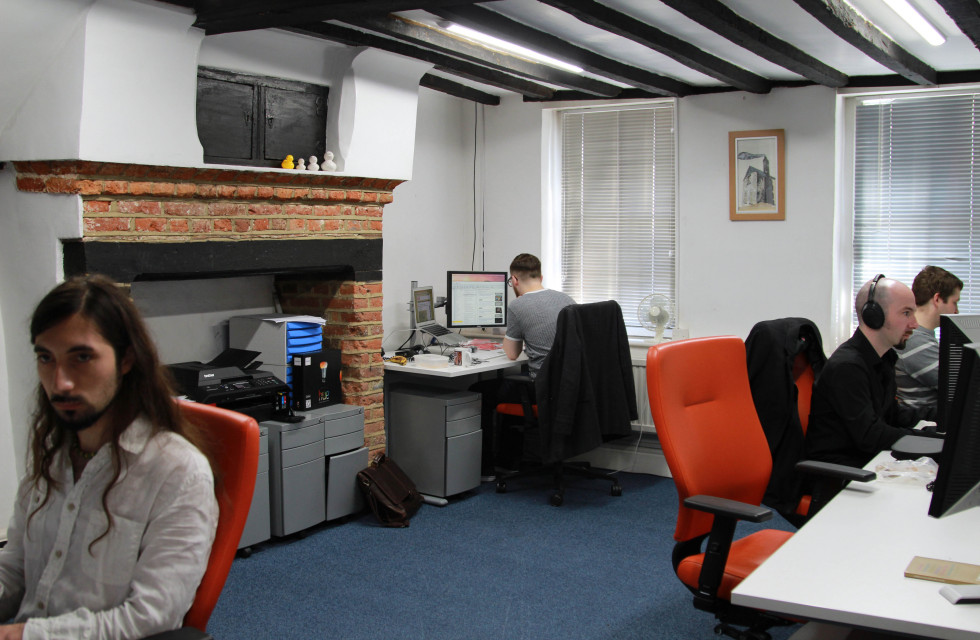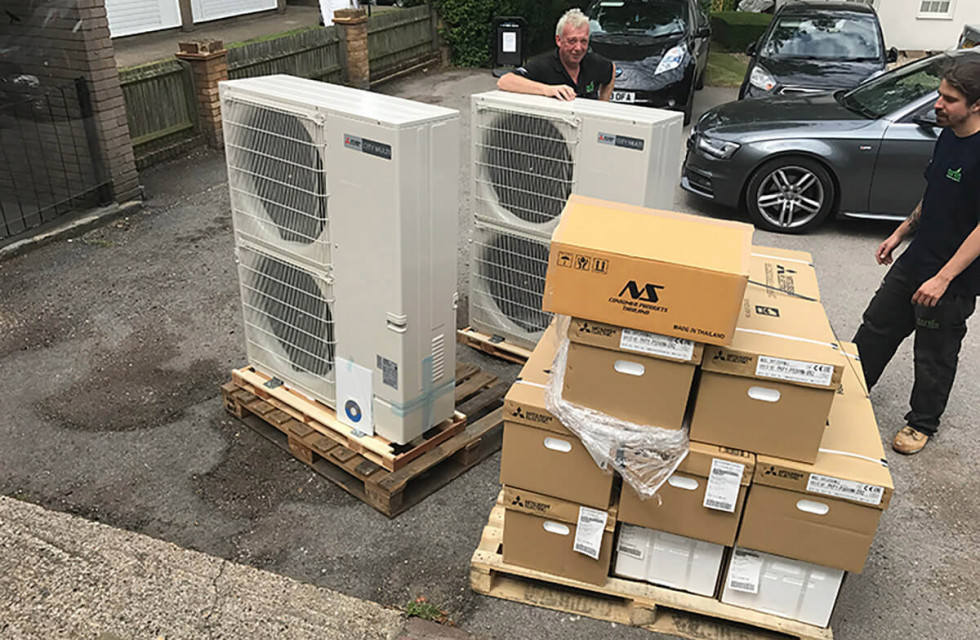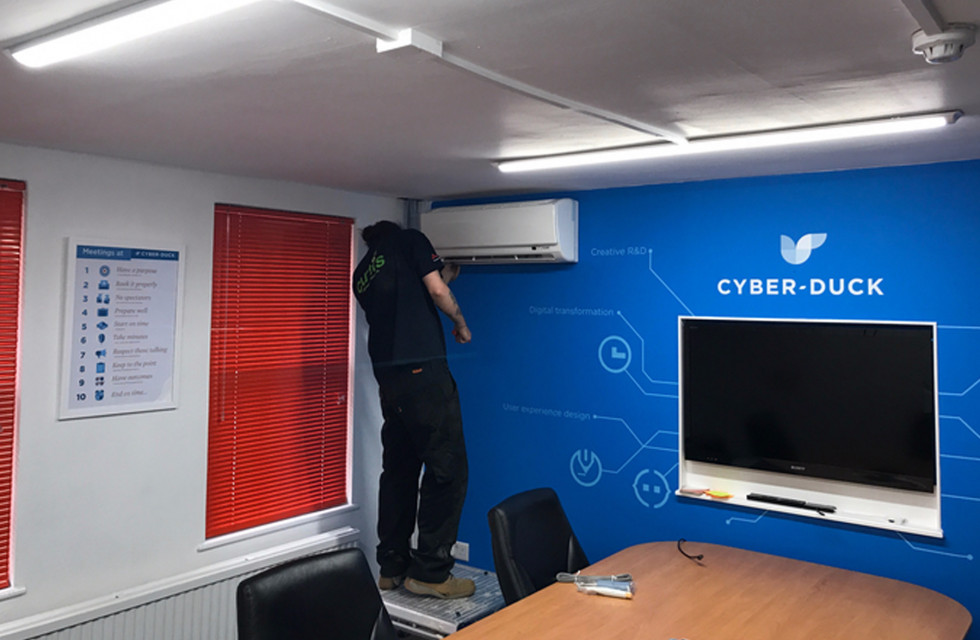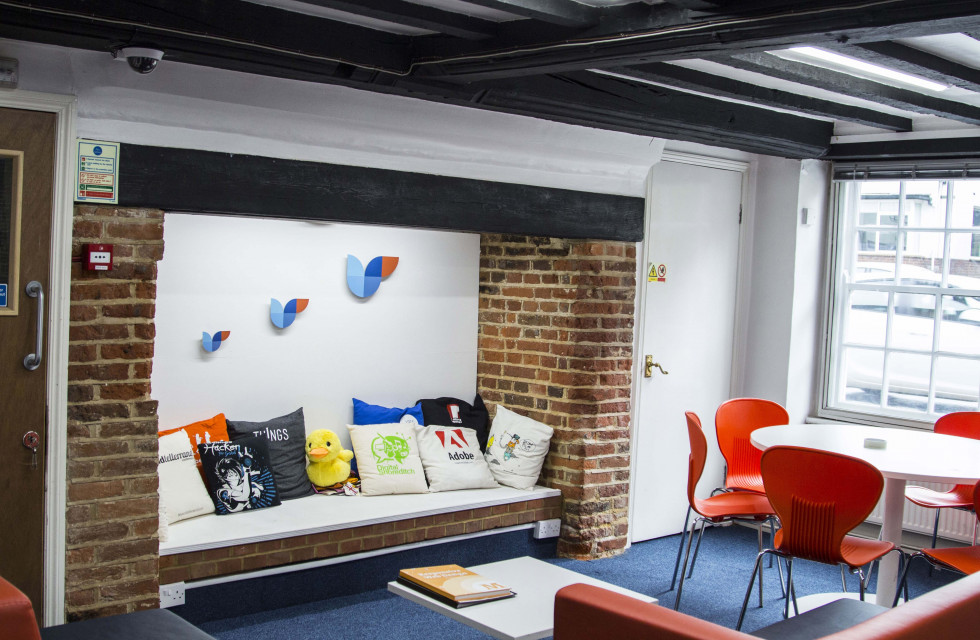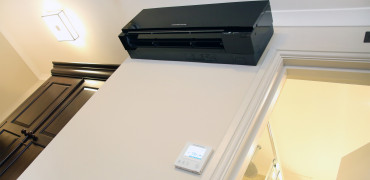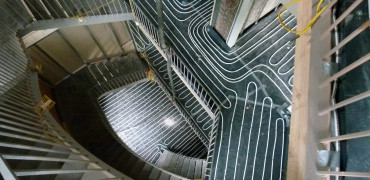For years now at Cyber-Duck, we’ve been desperately trying to find a way to have air conditioning installed at our Grade-II listed headquarters in Elstree, Hertfordshire, United Kingdom.
That’s because in previous years we’ve experienced the brunt of far too many heatwaves. We love our Elstree office, but unfortunately, our historical building retains heat a little too well – to make things worse, you can’t open some of its windows either.
That’s a huge problem. Cyber-Duck is an award-winning agency that delivers brands, websites and marketing campaigns for top clients, so we depend on our technology. If our computers and servers (or even our coffee machines) fail on us, we’re going to have a difficult time. And heat and technology don’t mix especially well.
Take it from us, adequate air conditioning is an absolute must for growing tech businesses.
Unsurprisingly, therefore, when the heat waves have hit we’ve experienced bumps in productivity. On the technology side, computer failure rates increased, our laptops temporarily lost their Wi-Fi connection and even our iPhones cut out. (If you know your Apple products, you’ll know that new MacBooks don’t require much ventilation to stay cool, so the fact they were still overheating truly says something.) On the staff side, uncomfortable temperatures sent morale plummeting, at least until we got the ice-cream in.
When you also consider that UK productivity across the board remains far below what it was before the Recession, it’s clear the issue is significant. For instance, the Office for National Statistics found that compared to the pre-crisis trend, UK workers were now producing almost 20% less per hour than expected.
As such, we need to take every precaution to promote productivity and not let it slide. To allow heat, an avoidable issue, to impede our productivity is completely unacceptable.
Overcoming a Grade-II Issue
Finding a solution to our air conditioning woes was therefore very important to us. But we quickly ran into problems with our applications for planning permission. The issue was that any plans we submitted to the Hertsmere council had to ensure we didn’t compromise the integrity and heritage of the building post-installation.
Firstly, we tried to solve the issue in-house. With our graphic design department to hand, we could draw up floor plans and sketch out where the best areas for our air conditioning units might be.
But we’re experts in user-centred design and marketing, not architecture. It soon became apparent that we needed to bring in the experts. An architect drew up our floor plans and a conservationist helped us identify the least intrusive areas to install the units.
A more exciting element of the application process came later. The council asked us to superimpose the air conditioning units and wires onto the walls where we planned to install them. We brought our graphic designers back on board here!
With a detailed floor plan and superimposed images ready, we submitted our application once more and kept our fingers crossed.
The Plans Go Through: Let the Work Begin
About this time, we began our relationship with Mitsubishi Electric. In fact, the project we worked on together was this very Hub.
Because of our close relationship with Mitsubishi Electric, and the reputation they have earned for quality, innovation and energy efficient products, it made perfect sense to use Mitsubishi Electric when we installed our air conditioning.
Thankfully, our application for planning permission came back successful at last – all that was left to do was choose an air conditioning system. Before long, we settled on a robust City Multi VRF (variable refrigerant flow) system. This system allows us to install exterior condensing units in a hidden space outside and fit the indoor units to each room in a flexible design.
Mitsubishi Electric’s system is less intrusive than other systems, requiring less piping and less drilling than others, so it’s the perfect choice for Cyber-Duck in our Grade-II listed office. What’s more, using the market-leading brand means we are getting one of the most energy efficient air conditioning systems available today.
VRF is a very sophisticated air conditioning system, requiring a deft hand to install it. That’s why we employed the services of Curtis Engineering Solutions to install our brand-new Mitsubishi Electric City Multi air conditioning systems.
They have hammered and drilled around all the ducks to install the system’s piping, trunking and condensing units to ensure that our team will stay cool and comfortable for the rest of the summer and beyond.
Now, Who Controls the Thermostat?
In fact, we’re already starting to benefit from our new air con. In true British style, some of the ducks have already complained about ‘being a bit cold’, which means we may need to play with the controller.
Of course, another benefit is that come winter, the air conditioning will also be able to switch to heating when required. That means we can switch off the older, traditional radiators and benefit from a system that’s good for both the team and the technology.
Take it from us, adequate air conditioning is an absolute must for growing tech businesses. Don’t get caught out. Ensure you take a proactive approach to the internal climate of your premises and your company’s productivity!
Danny Bluestone is CEO of Cyber-Duck
If you have any questions about this article, you can contact us via email. Or if you would like to tweet us, please follow our MEUK_LES twitter page.
We upload new articles every week so remember to check back regularly.
You can also sign up for our monthly newsletter below.



